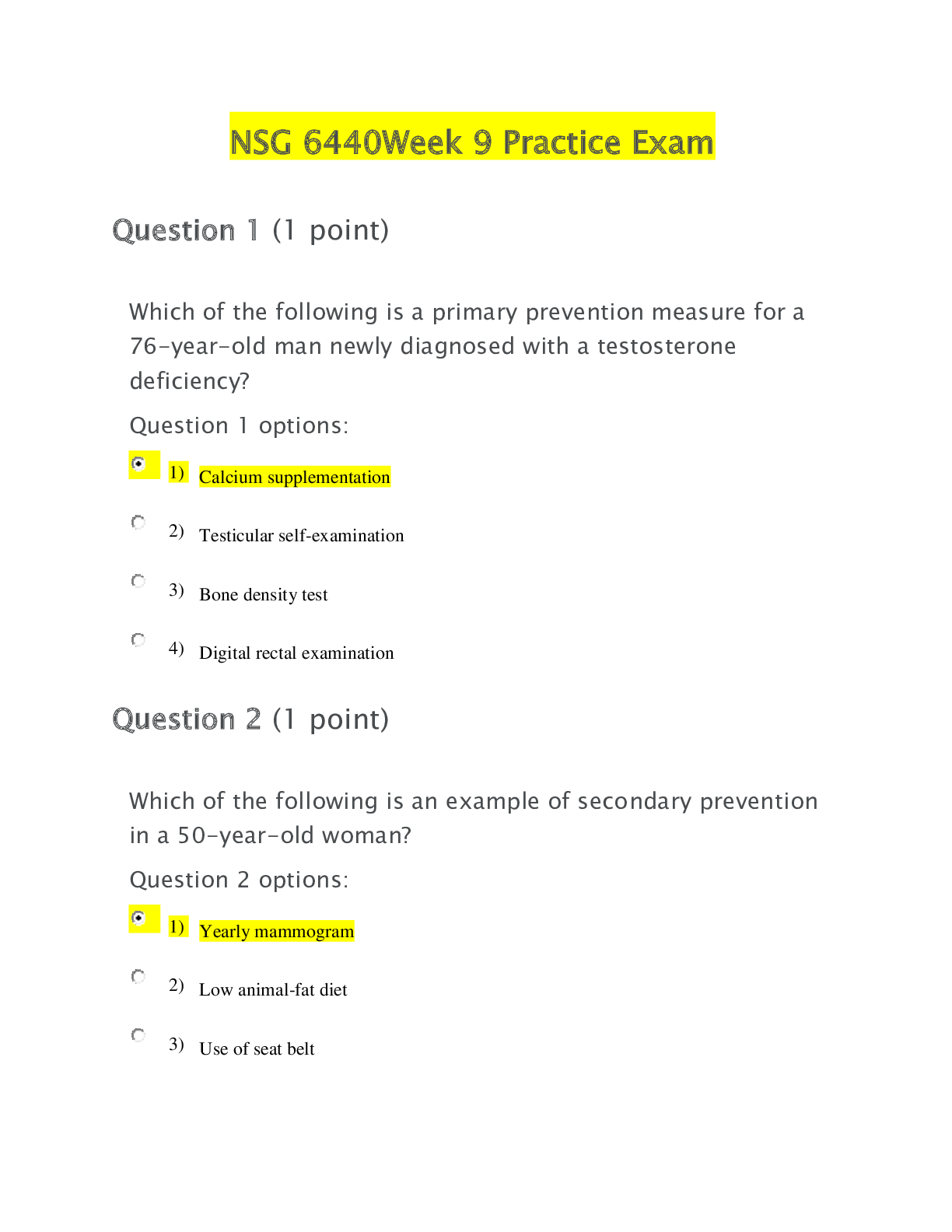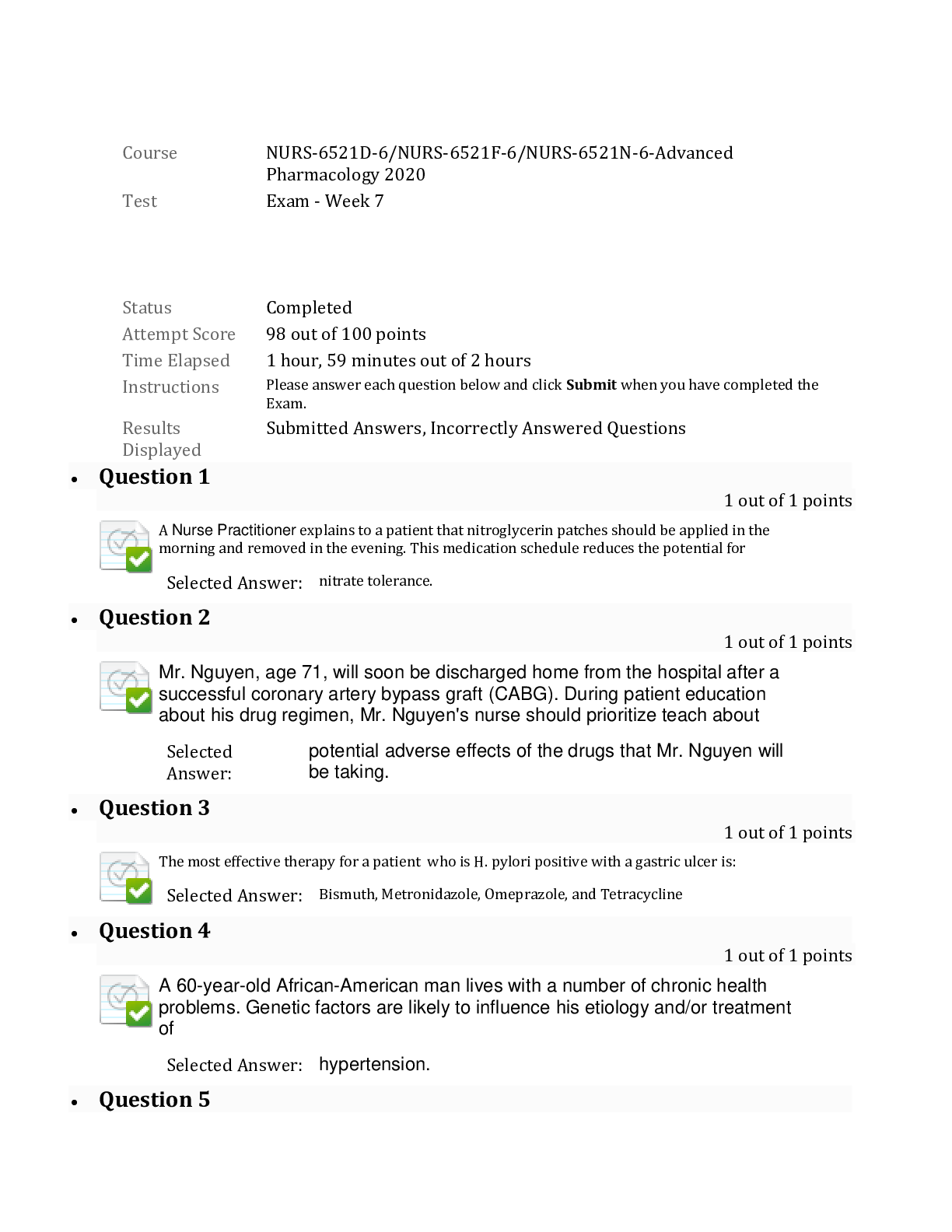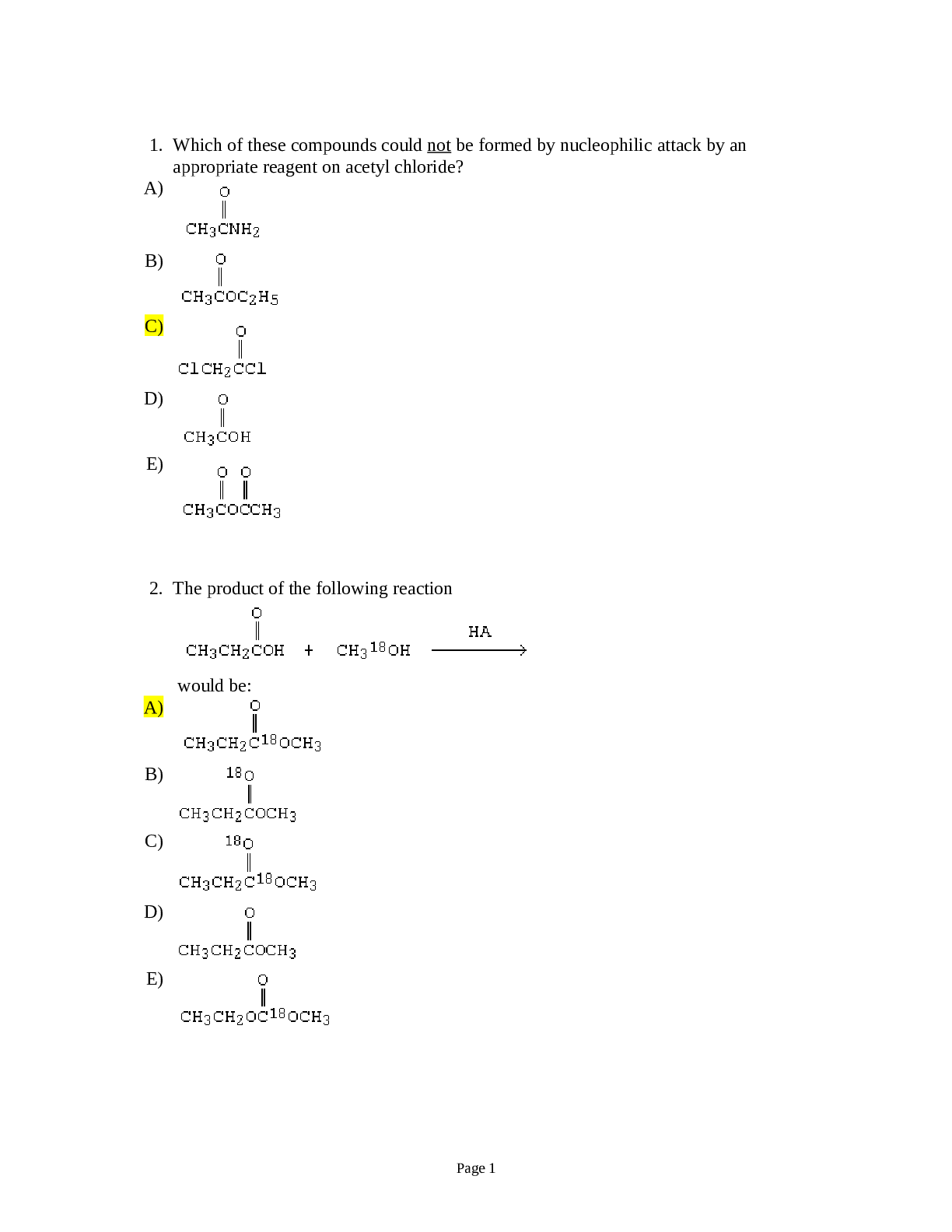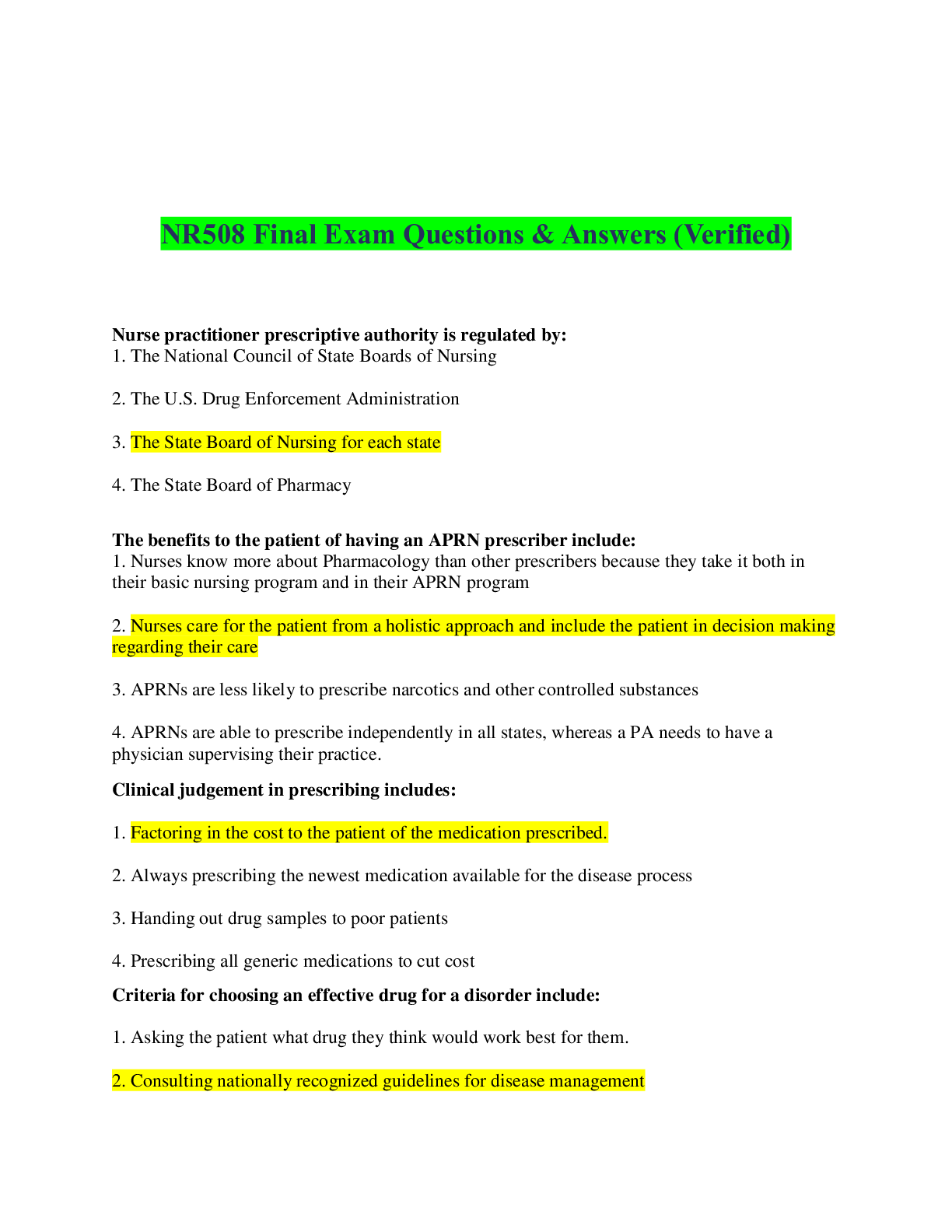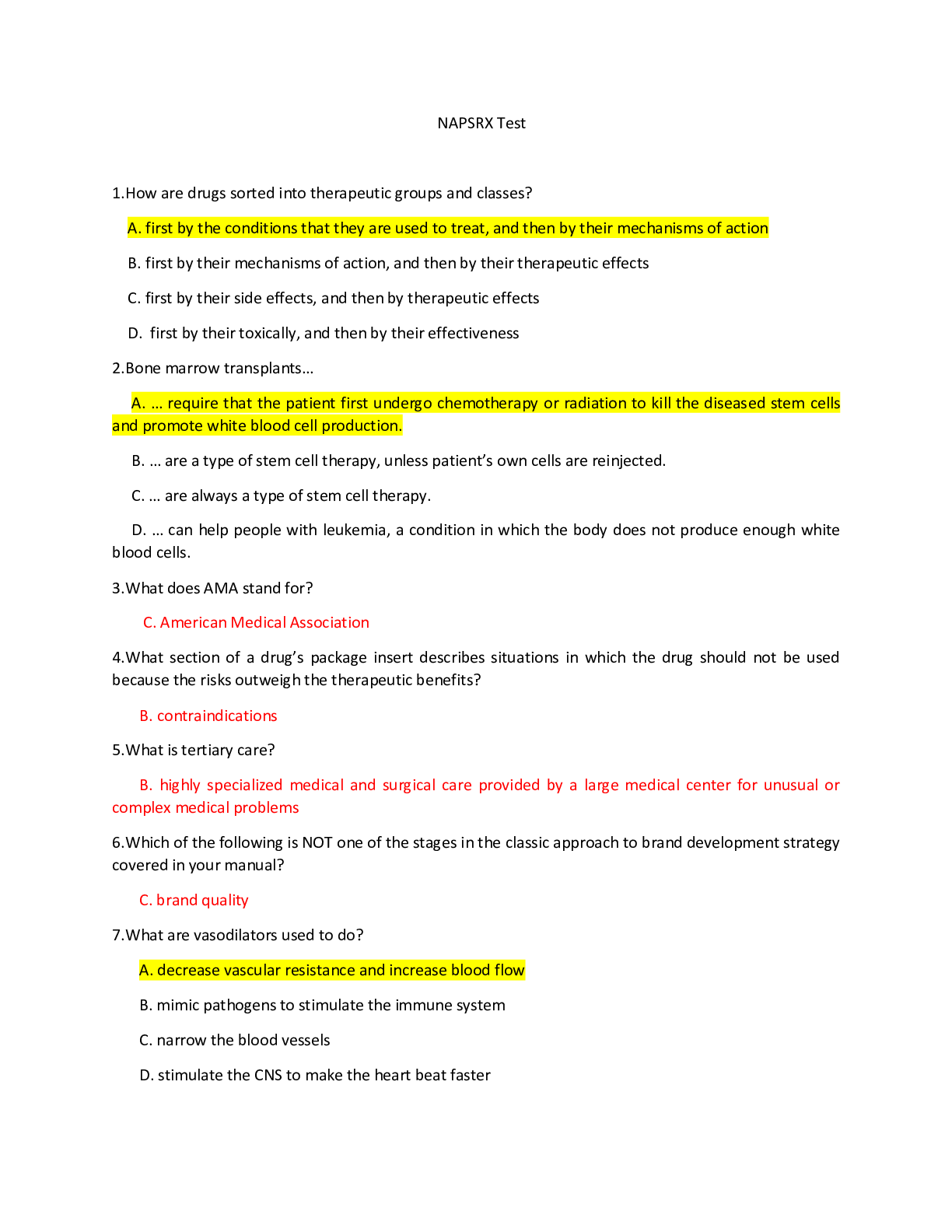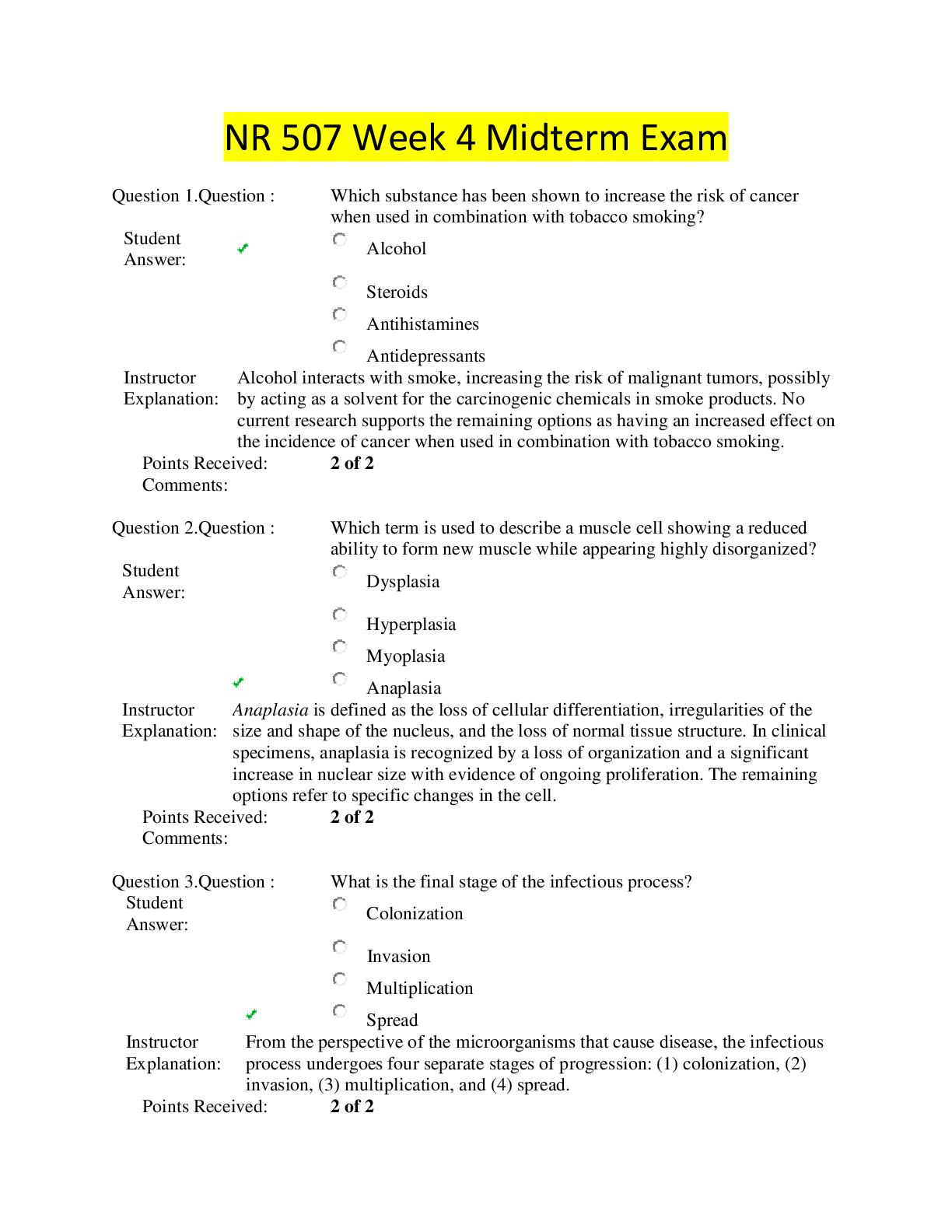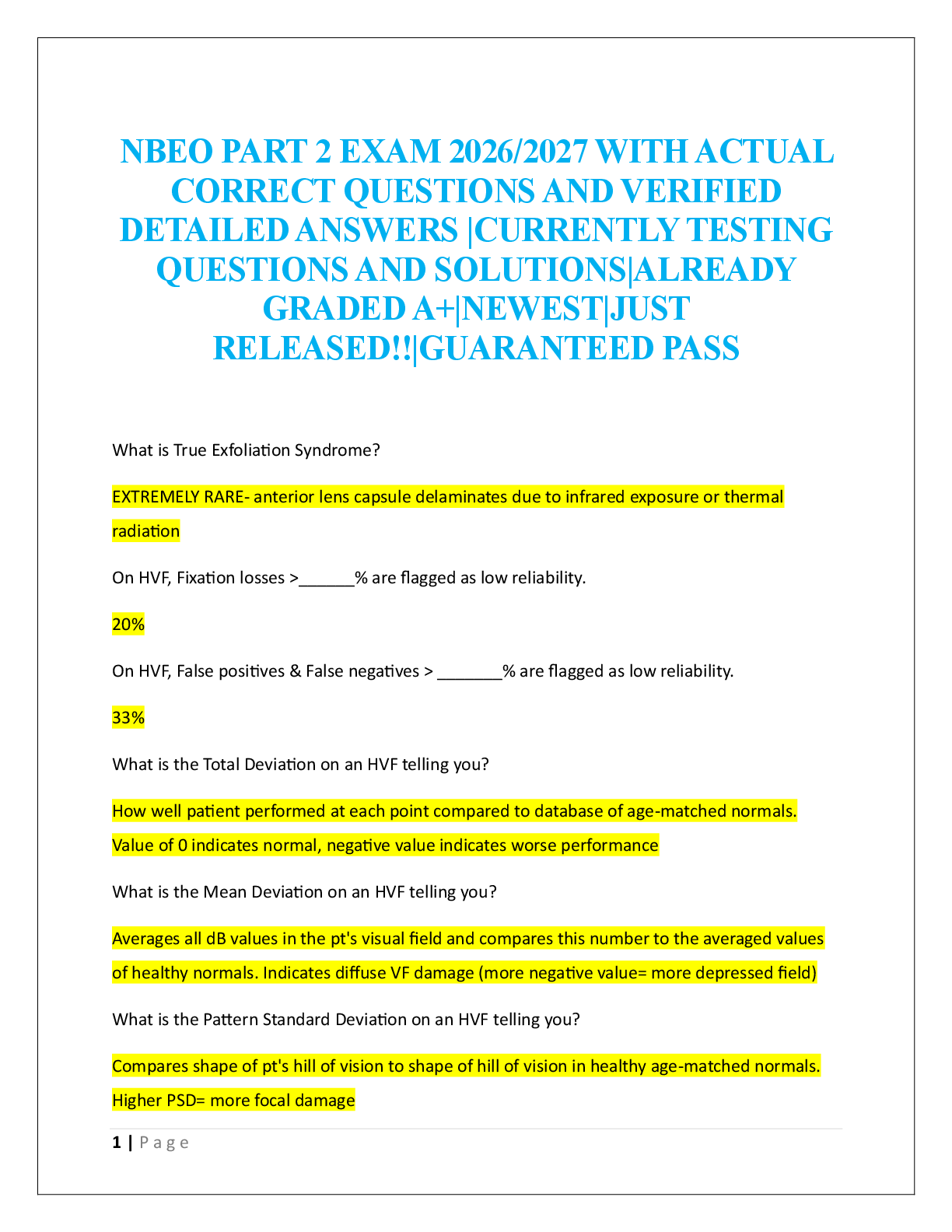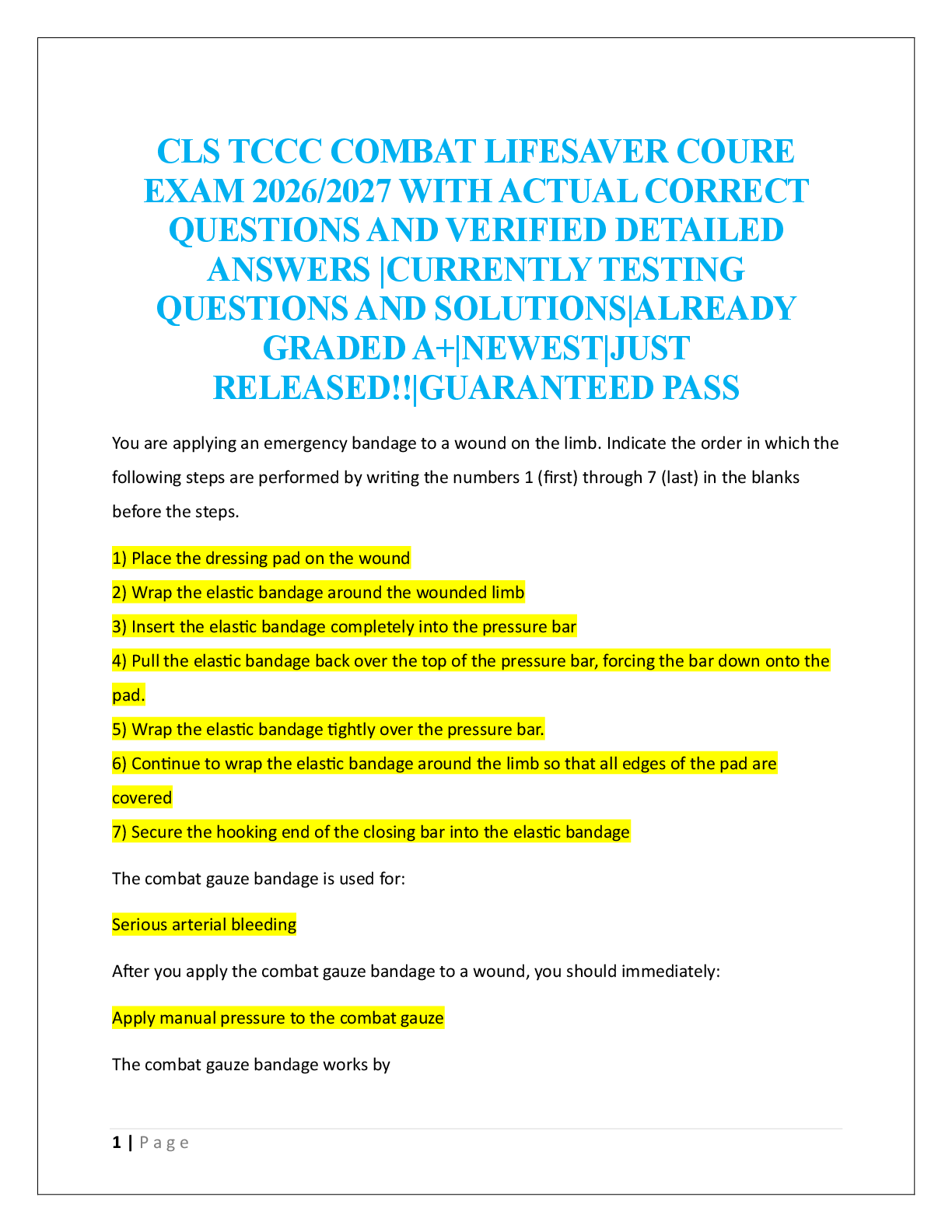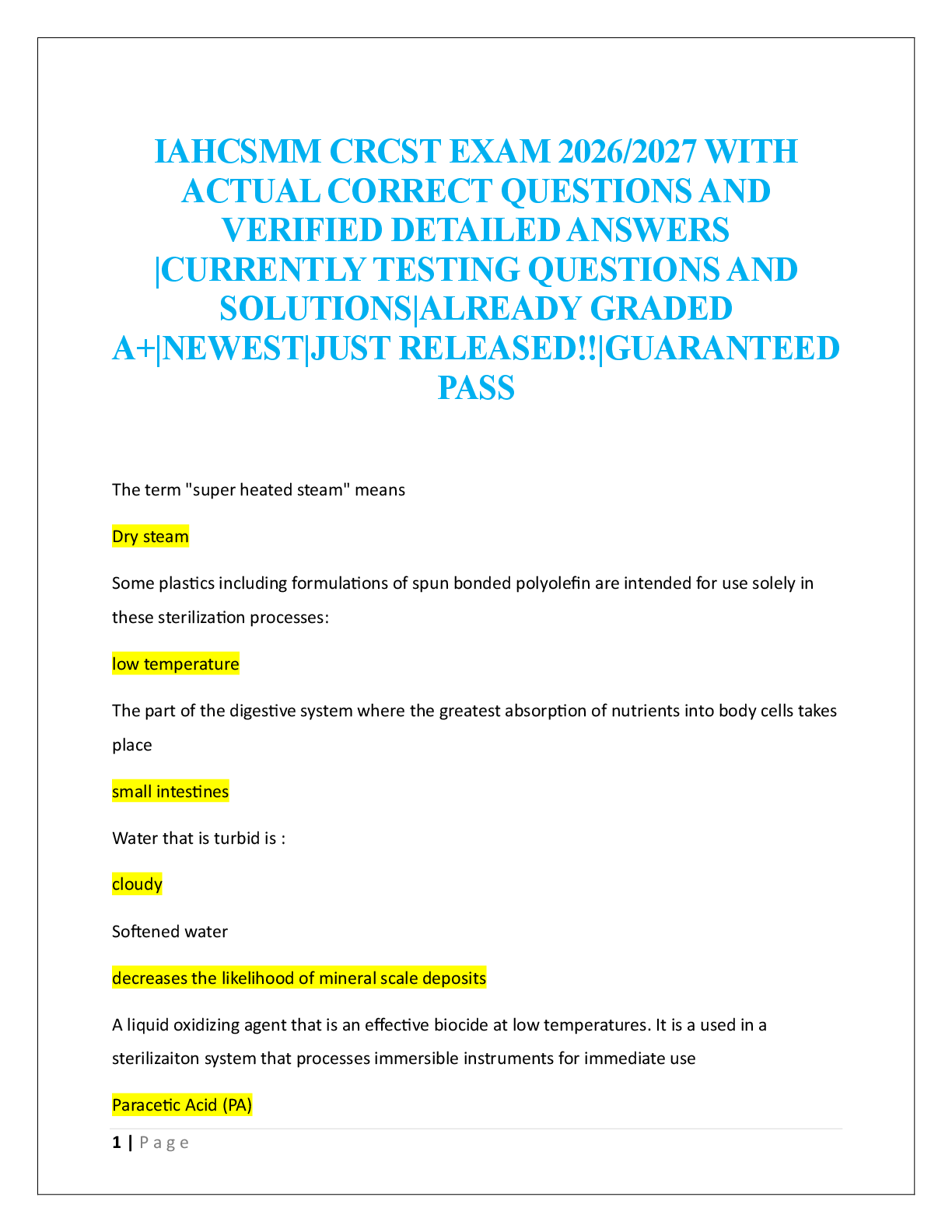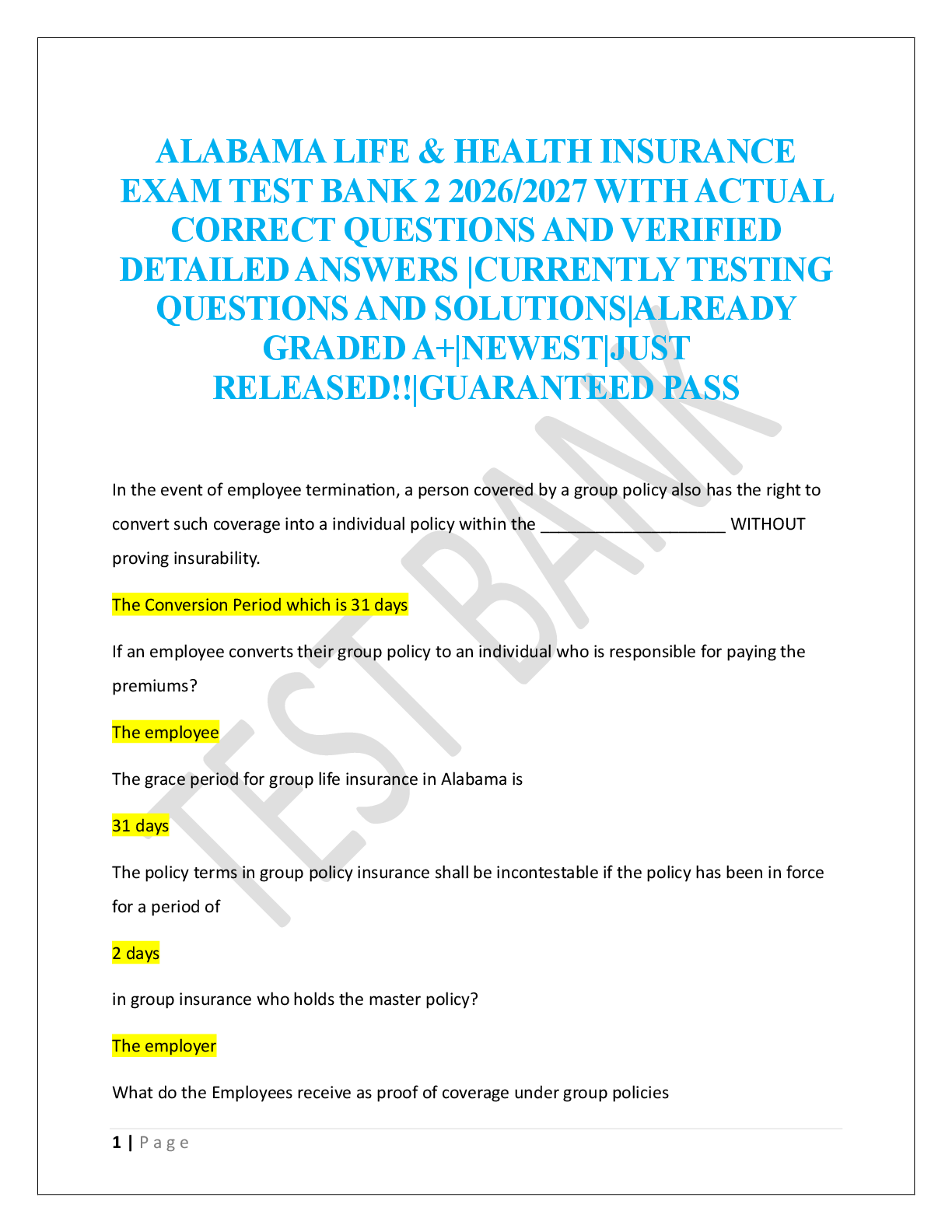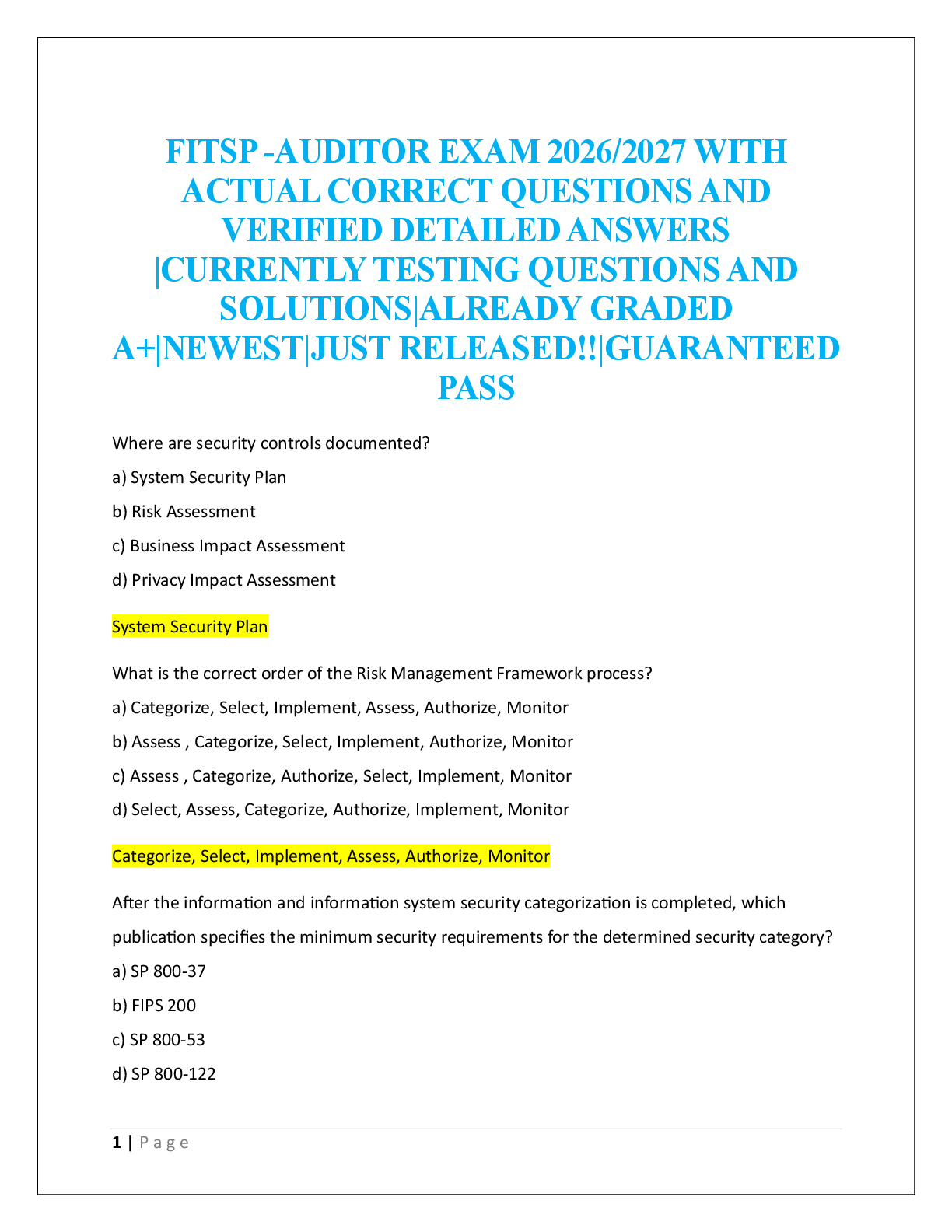MN 580 Midterm Exam. Kaplan University. 35 Q&A.
Document Content and Description Below
MN 580 Midterm Exam – Question with Answers Question 1 2 / 2 points An 18-year-old man presents with periumbilical pain, vomiting, and abdominal cramping over the past 48 hours. Physical examinat ... ion reveals rebound tenderness and laboratory analysis shows the presence of bandemia and a total WBC of 28,000 mm3. To support the diagnosis of acute appendicitis with suspected appendiceal rupture, you consider obtaining the following abdominal imaging study: Gina is 2 years old and presents with a 3-day history of fever, crankiness, and congested cough. Her respiratory rate is more than 50% of the upper limits of normal for age. Tubular breath sounds are noted at the right lung base. Skin turgor is normal, and she is wearing a wet diaper. She is alert, resisting the examination as age appropriate, and engages in eye contact. Temperature is 38.3° C (101° F). Gina's diagnostic evaluation should include: Aortic stenosis in a 15-year-old male is most likely: Which of the following laboratory tests can identify the causative organism of bronchiolitis? A Still murmur: A physiological murmur has which of the following characteristics? You anticipate that adult car seat belts fit correctly when a child is approximately _____ tall and is____ old. Physical examination findings in otitis externa include: In infants, solid foods are best introduced no earlier than: When advising a patient about injectable influenza immunization, the nurse practitioner (NP) considers the following about the use of this vaccine: A healthy 2-year-old child is able to: The preferred treatment option for a 6-year-old boy with pertussis is: At which of the following ages in a young child's life is parental anticipatory guidance about using “time out” as a discipline method most helpful? Common causative organisms of acute suppurative conjunctivitis include all of the following except: Question 15 2 / 2 points At which of the following ages in a young child's life is parental anticipatory guidance about protection from falls most helpful? Question 16 2 / 2 points Which of the following statements is true about inactivated poliovirus vaccine (IPV)? Question 17 2 / 2 points Problems after tetanus immunization typically include: Question 18 0 / 2 points Which of the following is true about the MMR vaccine? Question 19 2 / 2 points Treatment of viral conjunctivitis can include: Question 20 2 / 2 points A healthy 6–7-month-old infant is able to: At which of the following ages in a young child's life is parental anticipatory guidance about temper tantrums most helpful? Question 22 2 / 2 points Which of the following findings is most consistent with the diagnosis of acute bacterial rhinosinusitis (ABRS)? Question 23 2 / 2 points Which of the following is the most prudent first-line treatment choice for an otherwise well toddler with acute otitis media (AOM) who requires antimicrobial therapy? Question 24 2 / 2 points Which of the following is one of the more common sources of hepatitis A infection in the United States? Question 25 2 / 2 points Juice intake is acceptable in children 6 months and older per which of the following recommendations? Select all that apply. Question 26 2 / 2 points You are examining an 18-year-old man who is seeking a sports clearance physical examination. You note a mid-systolic murmur that gets louder when he stands. This may represent: Question 27 2 / 2 points A healthy infant at age 9–11 months is expected to: Question 28 2 / 2 points You examine a 10-year-old boy with suspected streptococcal pharyngitis. His mother asks if he can get a “shot of penicillin.” Which of the following statements is/are true regarding the use of intramuscular (IM) penicillin? Select all that apply. Question 29 2 / 2 points At which of the following ages in an infant's life is parental anticipatory guidance about teething most helpful? Question 30 2 / 2 points First-line treatment for uncomplicated hordeolum is: Question 31 2 / 2 points Which of the following imaging studies potentially exposes the patient being evaluated for abdominal pain to the lowest ionizing radiation burden? Question 32 2 / 2 points You are examining an 18-month-old boy who is not speaking any discernible words. Mom tells you he has not said “mama or dada” yet or babbled or smiled responsively. You: Question 33 2 / 2 points The gastric parietal cells produce: Question 34 2 / 2 points The most common causative organism of bronchiolitis is: Question 35 2 / 2 points Which of the following would not be found in newborns? [Show More]
Last updated: 2 years ago
Preview 1 out of 12 pages

Buy this document to get the full access instantly
Instant Download Access after purchase
Buy NowInstant download
We Accept:

Reviews( 0 )
$11.50
Can't find what you want? Try our AI powered Search
Document information
Connected school, study & course
About the document
Uploaded On
Apr 26, 2020
Number of pages
12
Written in
All
Additional information
This document has been written for:
Uploaded
Apr 26, 2020
Downloads
2
Views
305


